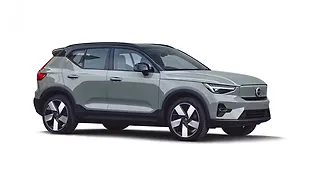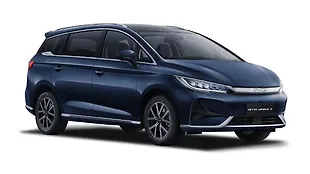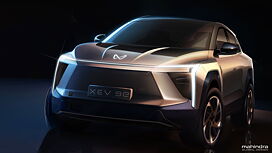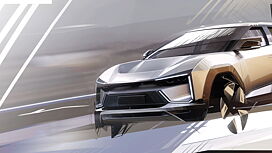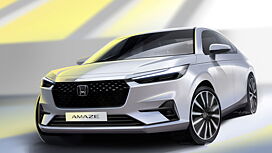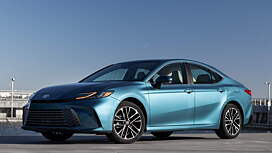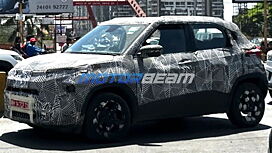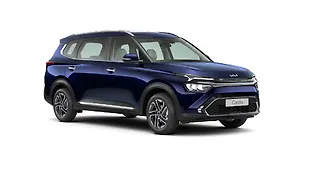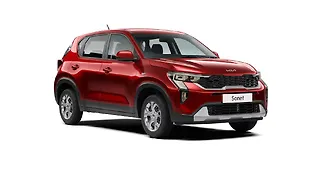Introduction

Kia's focus, commitment and how much importance the Indian market holds for it was clear when the world debut of the Seltos took place in India. The SUV achieved record bookings and in no time beat even the best-selling Hyundai Creta in its segment. So what does this high-on-demand SUV have, in order to set all these new sales benchmarks? Our comprehensive road test answers this question.
Design and style

This is the first thing that’s easily ticked off as the Seltos delivers what Kia promised. It rightly promotes it with a ‘Badass design’ caption, and it indeed does have one with a nice stance, right proportions, a remarkable appearance and bold character. This is thanks to the wide DRLs and LED lamps despite a busy looking front, a high hood and the flared wheel arches with striking alloys. Also, the chiselled rear bumper and nicely shaped tail lamps with LED inserts help complete a very modern look. The SUV would appeal to all kinds of customers as the HT line trims get chrome elements to add to the bling, while the GT variants boast of additional red accents to add to the SUV’s sporty character.

Interior

The Kia Seltos not only brags of a stunning level of exterior design quality, but doesn’t compromise on the interior as well. Small things like the innovative Bose speaker cover design, glossy panels or even the aluminium-finished controls look and feel top-notch. Be it the ergonomic layout, view from inside, space, quality of materials, fit and finish, storage places or even features, it’s the best in the segment. And it’s customisable with different designer mats and other elements. Customers won’t have anything to complain about.In fact, there are also two upholstery options to choose from - beige/black.

The comfort offered by the perforated and ventilated seats is good with a nice electric function for adjustments that add to the convenience. Additionally, they are nicely padded and offer adequate support too. This, combined with more than sufficient knee-room and shoulder room makes it a spacious cabin. In fact, the rear seat even gets a two-step recline adding to the cosiness. Moreover, there are plenty of cubby holes and stowage spots making it quite a practical cabin. And of course, there’s the biggest-in-class 433 litre boot that gobbles up all your luggage.

Safety and equipment

The top-spec Seltos gets a well-packed cabin making it easily the benchmark in its segment. The easy-to-use and read 10.25-inch touch screen infotainment system comes paired to eight Bose speakers that offer the crispest sound to keep one engaged. Apart from the usual navigation, Bluetooth and smartphone connectivity there’s UVO SIM-based connected car technology. Notable features that distinguish the Seltos include a segment-first eight-inch head-up display, a 360-degree camera, front parking sensors, in-car WiFi, an in-built air-purifier, a 7.0-inch colour display for the instrument cluster and high speed smartphone wireless charger. If you think that’s all, turn the left-side indicator on and a proper view of the left side automatically comes up on the instrument cluster through a camera. In fact, even the wiper settings show up here. When was the last time we saw a mid-size SUV giving out so much of information? All of this adds to the owner’s delight.

Other features include push-button start, keyless entry, electric sunroof, ventilated front seats, an eight-way powered driver seat, automatic climate control, cruise control, window blinds and more. Still, if we were to nit-pick, wish Kia gave the sun blinds a mirror and the music system a cast screen option. Just saying. But probably the latter was left out to avoid distractions. That brings us to the host of safety features. Apart from six airbags, the SUV is smartly equipped with ABS, traction control, brake-assist, hill-start assist control, TPMS, front and rear parking sensors, rain-sensing wipers and auto headlamps. What’s more, a five-star ANCAP rating adds assurance of it being a safe car.

Engine and Performance

Engine availability options include - a base 1.5-litre petrol, 1.5-litre diesel and a 1.4-litre turbo petrol. All of these are BS6 compliant. Apart from a standard six-speed manual, Kia is offering three automatic gearbox options as well – a seven-speed DCT, IVT and a six-speed AT. This will give buyers more options to suit their needs. We first put up the turbo petrol manual under our test cycle. This 1.4-litre turbocharged direct-injection mill is a silent and smooth motor that churns out 138bhp of power at 6,000rpm. It revs freely up to its redline at 6,200rpm showing off its excellent NVH levels as the engine is hardly audible inside the cabin. One wouldn't require to rev so much anyway as there's loads of torque available (242Nm) right from 1,500rpm. And though it’s linear, this torque surge is quickly evident and enjoyable in this 1.4 T-GDI. This helped it put up a 9.8s timing for the 0-100kmph sprint. It’s quite commendable for a mid-size SUV weighing 1,310kg.

Then, the six-speed transmission complements this engine well to match the torque curve with quick gearshifts. Though a bit notchy, these slot in without much fuss. I remember there wasn't a need to shift to a lower gear often as the torque is available over a wide range. Yet, the gearbox is fun to use and I ended up running through the gears quite often. But that's just me, as this trim scores high on tractability with the 20-80kmph run in third gear coming up in just 8.95s. The car even managed to pull from 40-100kmph in the fourth gear in just 10.38s. This speaks so much about its excellent mid-range grunt. Pottering around in traffic will never be boring and even out on the highway it manages to cruise at triple digit speeds and low revs.

Even the 1.5-litre diesel engine is a very refined motor and is surprisingly silent for being an oil-burner. Its power output is rated at 114bhp at 4,000rpm and 250Nm of torque at 1,500rpm. This variable geometry turbocharger spools in fast and never lets the engine feel bogged down. A 0-100kmph run in 12.23s shows it’s slower than the petrol, but not at all sluggish. In fact, the gear acceleration times show that the diesel is fun to drive too especially on the highway. The 20-80kmph run in third gear was completed in 9.77s, while the 40-100kmph sprint in fourth gear took 11.16s. That's quite similar to the petrol despite being heavier at 1,370kg. These figures also prove that one wouldn't feel nervous even while overtaking a long truck. Yet, unlike the petrol's lighter clutch, this one is slightly on the heavier side, but not troublesome to use.

Ride and Handling

On to the ride and handling department then. Be it the petrol or the diesel, there's not much of a difference in overall weights. Kia has managed to tune its independent McPherson suspension set-up well to take on our road conditions. Bumps and other broken roads are dismissed with ease. The 17-inch wheels and 190mm of ground clearance is sufficient to clear most obstacles. That said, road joints or sharp-edged potholes can be felt inside the cabin. Nevertheless, this firm ride irons out any bouncy feeling making it a comfortable cruiser on long drives.

Its steering is light, direct and doesn't have much play around the centre making the car easily manoeuvrable in city traffic. We would have loved a little more feedback from it especially while taking corners. But it drives like a car with minimal body roll. Yet, again, be a little aggressive and it will understeer. Thankfully the tyres grip well for the car to regain composure. Even the brakes, though a bit mushy on the pedal, are confidence-inspiring. These top-spec trims we tested get 16-inch front discs and 14-inch at the rear. These paired with a host of electronic assists such as ABS and EBD managed to stop the car quickly and put up similar results in both test cars.

Price and Fuel Economy
The petrol manual version returned a fuel efficiency of 11.7kmpl in the city and 15.55kmpl on the highway, which is an average figure. But on the other hand, the diesel manual is a more frugal one delivering 15.23kmpl within the city and 18.14kmpl on the highway. Pricing of the Seltos' Tech Line variant is between Rs 9.89 lakhs to Rs 15.34 lakhs. On the other hand, the GT line trim costs between Rs 13.79 lakhs to Rs 16.29 lakhs (all prices ex-showroom).

Verdict

So the popularity of Kia’s first product in India can be attributed to its handsome looks, spacious cabin with modern features, tractable engines, a likable ride quality and much more. Apart from some average plastic quality in lower sections inside, there isn’t much one can complain about. Some features from the top-spec trims will not be available in lower variants even as an option. But then the Seltos has upped the ante in terms of features and we would recommend buying the top-spec variant. This SUV is currently on sale with three engine options, two trims (Tech Line and GT) and a total of 16 variants, with prices very competitive as promised. Also, now with a full support of 265 dealerships and a network that's constantly expanding, we can only see the demand for the Seltos increasing.

Pictures by Kapil Angane
Specification
| CAR NAME | Kia Seltos | |
|---|---|---|
| Variant | HTX Plus 1.5 Diesel Manual | GTX+ 1.4 Petrol Manual |
| ENGINE | ||
| Fuel | Diesel | Petrol |
| Installation | Front, transverse | Front, transverse |
| Displacement | 4 cyls, 1493cc | 4 cyls, 1353cc |
| Power | 114bhp at 4000rpm | 138bhp at 6000rpm |
| Torque | 250Nm at 1500rpm | 242Nm at 1500rpm |
| Power to weight | 83.21bhp per tonne | 105.34bhp per tonne |
| Torque to weight | 182.5Nm per tonne | 184.73Nm per tonne |
| Gearbox | Six Speed Manual | Six Speed Manual |
| CHASSIS & BODY | ||
| Kerb weight (measured) | 1370kg | 1310kg |
| Tyres | 215/60 R17 | 215/60 R17 |
| Spare | Full-size | Full-size |
| STEERING | ||
| Type | Rack and pinion | Rack and pinion |
| Type of assist | Electric | Electric |
| Turning circle | 10.6 | 10.6 |
| BRAKES | ||
| Front | Discs | Discs |
| Rear | Discs | Discs |
| ABS | Yes | Yes |
Test Data
| CAR NAME | Kia Seltos | |
|---|---|---|
| Variant | HTX Plus 1.5 Diesel Manual | GTX+ 1.4 Petrol Manual |
| PERFORMANCE & BRAKING | ||
| 0-20kmph | 1.09s | 1.05s |
| 0-40kmph | 3.03s | 2.26s |
| 0-60kmph | 5.04s | 4.27s |
| 0-80kmph | 8.53s | 6.46s |
| 0-100kmph | 12.23s | 9.80s |
| 0-120kmph | 17.99s | 13.56s |
| 20-80kmph in 3rd gear (kickdown) | 9.77s | 8.95s |
| 40-100kmph in 4th gear (kickdown) | 11.16s | 10.38s |
| 100-0kmph | 3.06s, 43.22m | 3.03s, 41.94m |
| 80-0kmph | 2.24s, 22.59m | 2.32s, 25.58m |
| FUEL ECONOMY | ||
| City | 15.23kmpl | 11.7kmpl |
| Highway | 18.14kmpl | 15.55kmpl |
| Tank size | 50 litres | 50 litres |
| Range | 834.25km | 681.25 |
| INTERIOR MEASUREMENTS | ||
| Front | ||
| Legroom(Max/min) | 850/620mm | |
| Headroom | 940mm | |
| Shoulder room | 1340mm | |
| Backrest height | 620mm | |
Seat base length | 520mm | |
| Rear | ||
| Legroom(Max/min) | 850/620mm | |
| Ideal legroom | 700mm | |
| Headroom | 940mm | |
| Shoulder room | 1260mm | |
| Seat base length | 480mm | |
| Backrest height | 600mm | |
| Boot | 433 litres | |
| Length/width/height | 850/1020/400mm | |
| Loading lip height | 760mm | |

![Kia Seltos [2019-2022] Image Kia Seltos [2019-2022] Image](https://imgd.aeplcdn.com/272x153/n/cw/ec/33372/seltos-exterior-right-front-three-quarter-3.jpeg?q=80)











